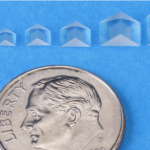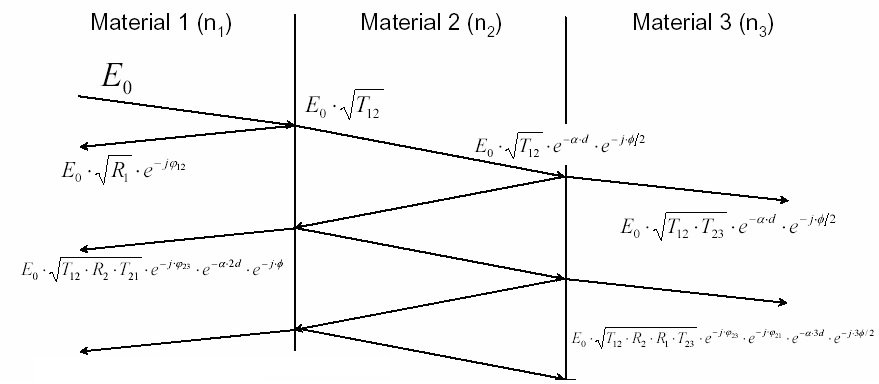
Surface Quality: What you need to know
Tuesday, 8 September, 2020
Tower Optical Microprisms (by Yoany Rodriguez PhD)
Wednesday, 30 September, 2020Introduction
The function of a precision optical component almost always relates to reflecting, transmitting, or refracting light. But funhouse mirrors, antique windows, and plastic magnifying glasses do the same functions – with visible distortions. We see those imperfections in terms of local shape distortions only when they create angles exceeding several minutes of arc. Any distortions that can be seen with the naked eye are unacceptable in precision optics, and so special instruments are needed to make those them visible and quantifiable.
Throughout much of the 20th Century, such instruments included the Ronchi grating, the Hartmann screen, the Foucault knife-edge. They all displayed angles and shape distortions to much greater accuracy but depended upon a skilled test technician to properly interpret – and honestly evaluate – the results.
When placed against an optical surface, test plates and Fizeau-Laurent interferometers (both still in use) form simple interferometers capable of directly measuring a wavefront, but they have many limitations in flexibility, setup errors, and interpretation. The first truly lab-friendly and flexible turnkey laser-based interferometer system was introduced in the early 1970’s. Since then, interferometry has become the dominant test for the accuracy of precision optical components. Now, directly quantifiable measurements of angles well under an arc-second and wavefront phase under 30 nanometers is routine and speedy.
What is interferometry?
An interferometer is an instrument that compares an undistorted reference beam of light with a portion of the same beam that has encountered the optic to be tested. The phase difference between these two beams in every place across the test aperture exhibits their relative phase down to small fractions of the light’s wavelength.
When this phase map is viewed by the eye, a set of “fringes” is seen. The bright areas represent nl of relative phase differences while the dark areas represent relative phase differences of
(n ± 1/2)l, where l is the wavelength and n = ±(0, 1, 2…). The waves “interfere” destructively at (n ± 1/2)l, from whence we get the term interferometer.
In modern interferometers, software is used to compute relative phase at any point in the test field and is no longer limited to the bright or dark lines we see as fringes. A map can then be created of the entire wavefront. Note: An interferometer doesn’t see a surface or an optical component, it only sees the wavefront reflected or refracted from it.
Definitions
A “fringe” is the locus of any given n in optical path difference (OPD), forming a continuous line of either brightest or darkest appearance.
A “fringe spacing” is the jump from a given n to the next n in the series. It is seen as two adjacent fringes. A fringe spacing indicates a difference in relative phase between points on one fringe and those on the next fringe of one whole wavelength of OPD. See common mistakes below.
A “wave” is short for one wavelength of phase difference change between different points being tested when compared to the reference beam. Specifications are often given in terms of a fraction of a wave.
A “nanometer” (nm) is a unit of length equal to 10-9 meter. Wavelengths of visible light range from 400 – 700 nm; most commercial interferometers operate at 632.8 nm. Specifications may be given in nm, which are directly convertible to “waves.”
“Wavefront” refers to the entire shape of the tested wavefront after encountering the optic whether by transmission, refraction, or reflection. See “common mistakes” below.
“Fringe scaling factor” is the conversion factor between the map of the interfering wavefronts and the specified parameter (flatness, transmitted wavefront, reflected wavefront, etc.). It is most often set at 0.5. See “common mistakes” below.
“Tilt” is the average slope between the test and reference beams. Unless measuring parallelism, tilt is usually subtracted from the test result.
“Flatness” refers to the entire shape of the tested surface after reflection compared to a plane.
“Power” is the best spherical fit to the departure of the wavefront or surface from the desired shape. It is related to a radius of curvature change or a focal length change.
“Astigmatism” is the maximum difference in power across the test field measured across two orthogonal profiles. A cylinder, for example, is astigmatic.
“Irregularity” is the remainder of wavefront imperfections after power and tilt are removed. It typically consists of a radially symmetric series of ripples plus additional local variations.
“Peak to valley” (PV or P-V) is defined as the difference between the highest point and the lowest point in the test field, after the allowable factors are subtracted.
“RMS” stands for root-mean-square. It is a statistical measure of average deviations from the desired shape, avoiding the undue influence of a few rogue pixels that plagues P-V measurements.
“Maximum slope error” refers to the greatest slope of a small region compared to the mean. The range of size of these regions must be specified.
Standard tolerances
It’s common to see lenses specified at l/4 or l/8, and mirrors at l/8, l/10, and l/20. Irregularity and astigmatism is usually set at ½ to ¼ of the overall tolerance. Less common are tolerances given in “fringes.” They may refer to surface or wavefront, single-pass or double-pass. Where do these tolerances come from? As often as not, just habit. Someone once told the purchaser or draftsperson that these are “standard” values for good, better, and best – and they’ve worked in the past. In most cases they still do. What is really needed?
For most digital imaging, there is vanishing benefit in demanding less than l/4 of total wavefront distortion in the entire system. For most visual imaging, even several full wavelengths of OPD causes only a slight degradation, so long as slope errors are low. When using coherent light though, l/4 is barely adequate because it begins to compromise focal spot brightness. Internal optics in a laser often require l/20 or better because these optics act on the light again and again in multiple passes through the cavity.
Common mistakes
Many people believe a “fringe” “is” “a half-wave.” The whole truth is that a fringe spacing represents a full wave of accumulated OPD at the plane of interference. Always. Yet the common belief usually gives the right answer! This is because the fringe pattern in a Fizeau or Twyman-Green interferometer is almost always the result of the light taking a round trip off the surface or through the transmitting element, and so its accumulated OPD is twice the typically specified amount. And so the default fringe scaling factor is 0.5.
But sometimes the print will call for a “reflected wavefront” from a surface, or a “double-pass transmitted wavefront.” In these cases a fringe spacing represents one full wave of OPD, and the fringe scaling factor should be set to 1.
And sometimes an optical component will be used at an angle, either in transmission or reflection. The fringe scaling factor must be carefully calculated for these tests, and the specification must be clear on the requirement.
Partner with Tower Optical Corporation
If you’re looking for a highly-experienced team, premium quality, and an unwavering commitment to excellence, partner with Tower Optical for even the most demanding applications. From concept to the final product, this leading precision optics manufacturer ensures quality and precision throughout.
With custom-manufacturing capabilities and an inventory of in-stock items, they provide a variety of products to industry experts all over the world. Among their portfolio are beamsplitters, optical filters, optical windows, beam expanders, laser mirrors, and over 10,000 waveplates.
Send them a drawing of your optical solution and they’ll reach out to you with a quotation.



